The museum is located at the former Southern Railway steam locomotive repair complex in Spencer, NC. Known as "Spencer Shops," this facility is located about halfway between Washington, DC and Atlanta, GA making it well situated to service the locomotives. Spencer is located near Salisbury, NC and is about 20 miles west of my home town of Lexington, NC. The museum is not far from Interstate 85 and is easily accessible to this major highway.
The North Carolina Transportation Museum is the largest such facility in the South. From the early dugout canoe, to wagons, Model T Fords, steam trains and modern jets, the museum is a center for understanding and enjoying travel history.
Admission to the museum is free. There is a small fee for riding a train around the complex and for riding the roundhouse turntable.
Below is a picture of the roundhouse and the turntable. The roundhouse is a multi-stall facility where the locomotives were repaired. The locomotive to be repaired is placed on the turntable. The turntable is then moved so that the locomotive can be placed in the desired stall for repair. In the photograph below, you can see several locomotives and railroad cars in the stalls. The turntable can be seen in the foreground.
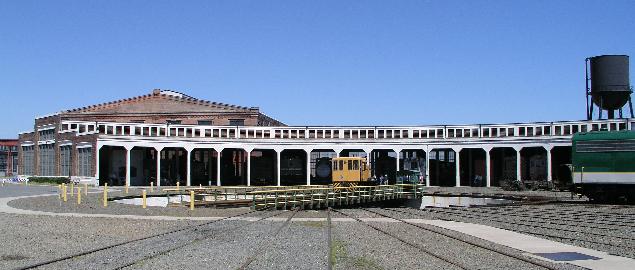
There are many interesting locomotives and railroad cars in the roundhouse. Below are photographs of some of them.
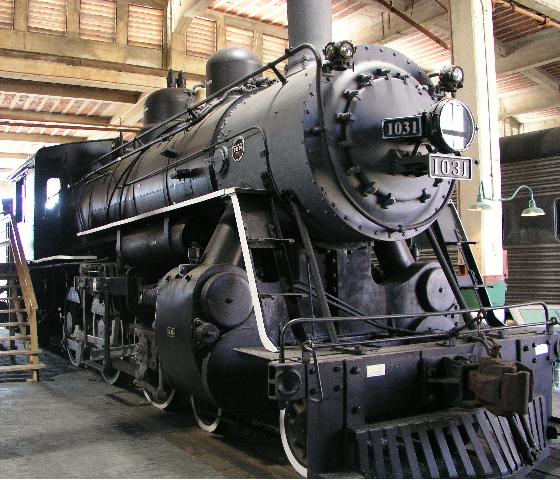
The steam locomotive above is interesting. You can walk up a platform and look inside where the engineer would sit and control the engine. The principal controls such as the throttle are labeled.
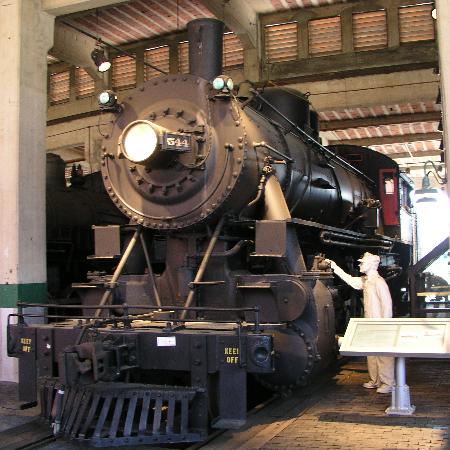
The picture above gives you an idea of the size of a steam locomotive.
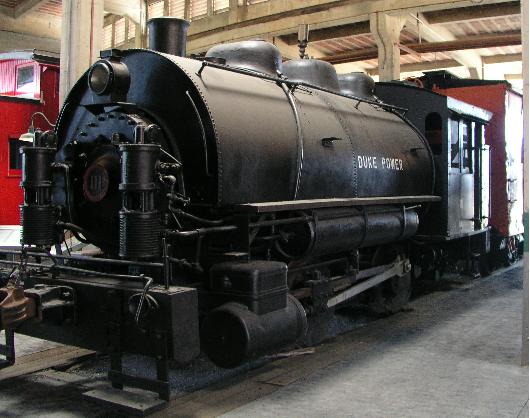
The steam locomotive above is a small one used by Duke Power Company.
The museum also has some of the more modern railroad engines such as the diesel engines. The one shown below sports the old Southern Railway emblem on the front. I have an electric train engine similar to the one below; however, mine has the Santa Fe color scheme.
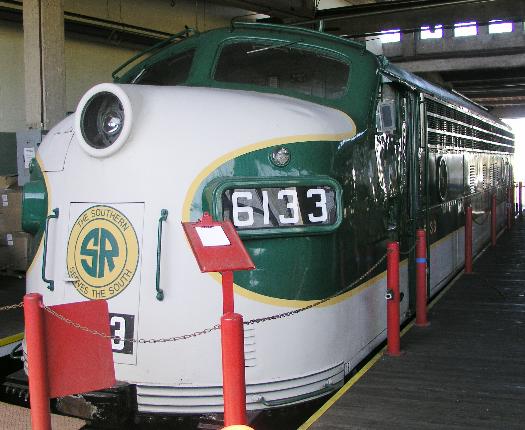
Part of the roundhouse is used to refurbish the old railroad locomotives and cars for display. Below is a picture of a diesel engine outside the roundhouse. This engine was running when I took the picture. Evidently, it had been recently refurbished and was idling outside.
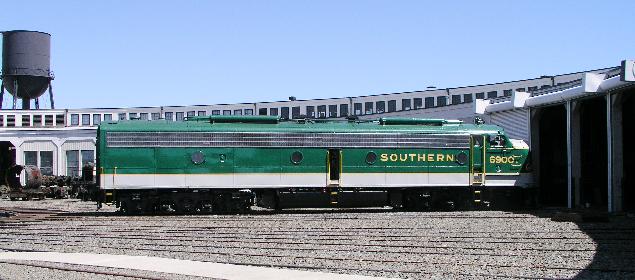
The museum has several railroad cars such as this caboose shown below. The museum has several cabooses and you can walk through two of them.
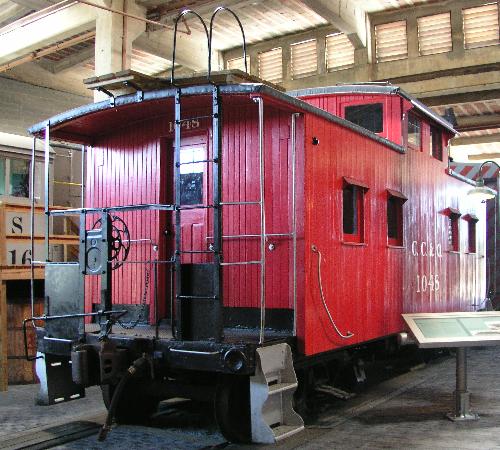
The Duke family was a wealthy family in North Carolina. In fact, Doris Duke had her own special railroad car for travel. Her car is shown below. You cannot walk through it, but you can look through the windows and see the splendor inside.
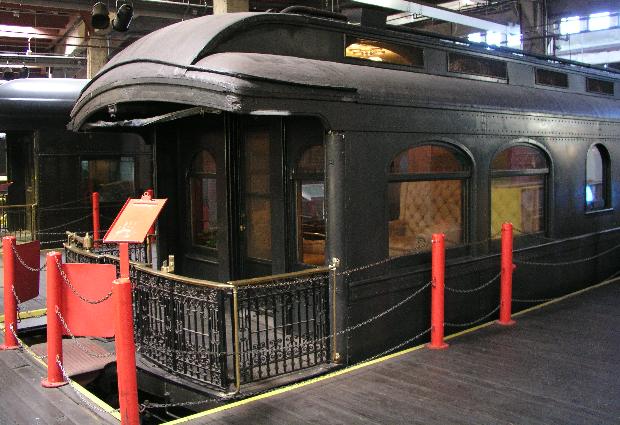
There is a mail car that you can walk through. An inside view is shown below. The mail bag catcher is mounted to the outside of this car. The catcher is a large hook that grabbed mail bags that were hung beside the railroad tracks. As the train passed by, the hood would grab the mail bag.
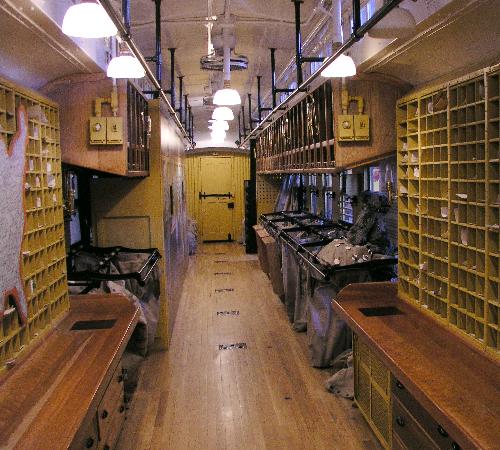
You can ride a train around the complex. The train, shown below, has a couple of old passenger cars and a caboose.
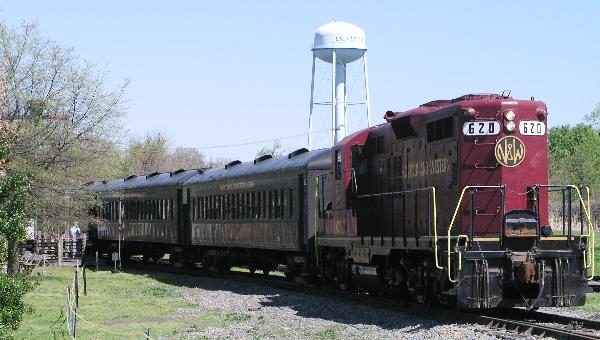
The museum has other examples of transportation other than railroad articles.
Below is a picture of a Model T Ford that is in the museum.
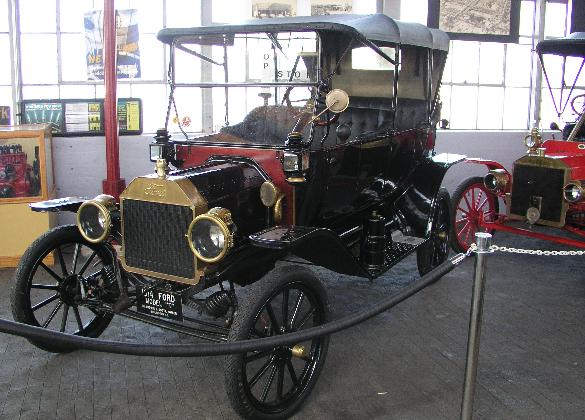
Below is another old car in the museum.
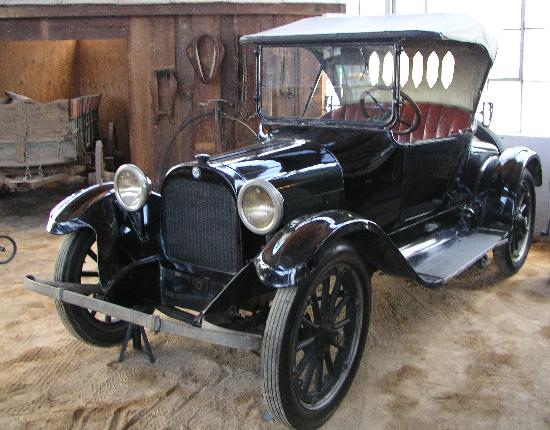
Below is a very old "buggy-type" car in the museum.
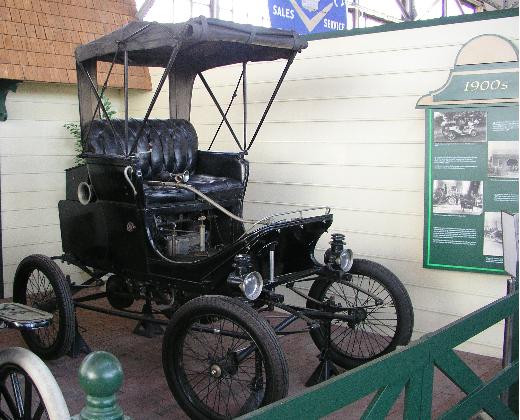
Below is an old fire engine in the museum. This fire engine is from my home town of Lexington, NC. You can see the town name on the hood.
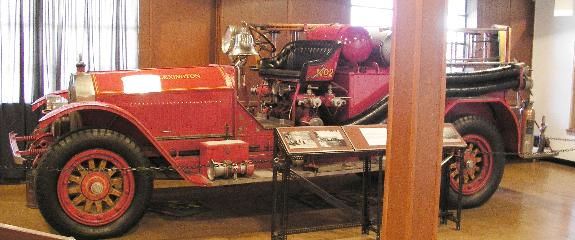
Below is an old NC Highway Patrol car. You can see the old Highway Patrol emblem on the door.
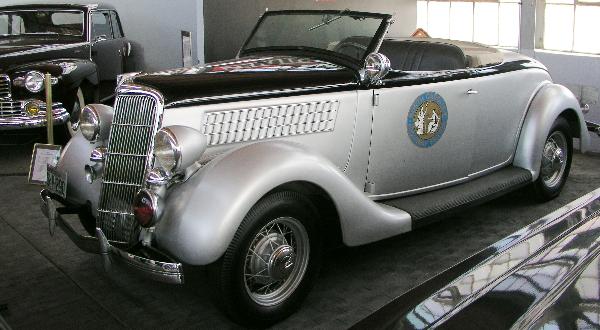
And finally, there are examples of old means of transportation. Below is a picture of a covered wagon.
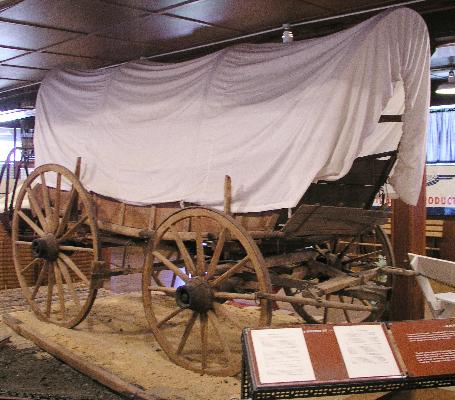
There is one old airplane you can see up close in the museum. I noticed that inside one old building that is being refurbished there is an old Piedmont Airlines (now US Airways)airplane and an Eastern Airlines airplane. One day these airplanes can be seen up close.
Tweetsie Raliroad
If you would like to ride a real steam engine train, then you might be interested in Tweetsie Railroad, located in the North Carolina Mountains between Boone and Blowing Rock. This railroad is an actual running narrow-gauge train that used to operate in the North Carolina mountians in the 1920's and 1930's. Now the train has been restored and it runs around a large hill. For a small fee, you can ride the train around the hill and outlaws sometimes stop and "rob" the train. Indians also used to "rob" the train. It is a lot of fun for youngsters. Below are some pictures of Tweetsie Railroad I scanned from a very old brochure.
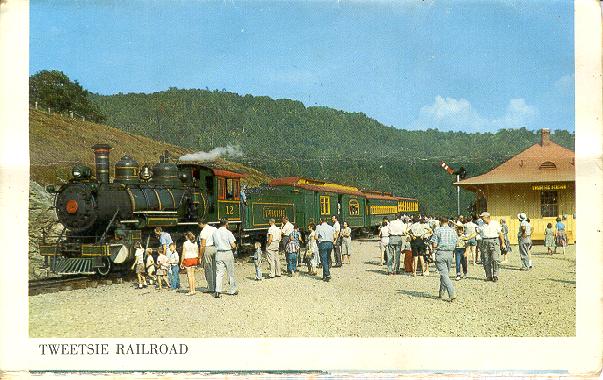
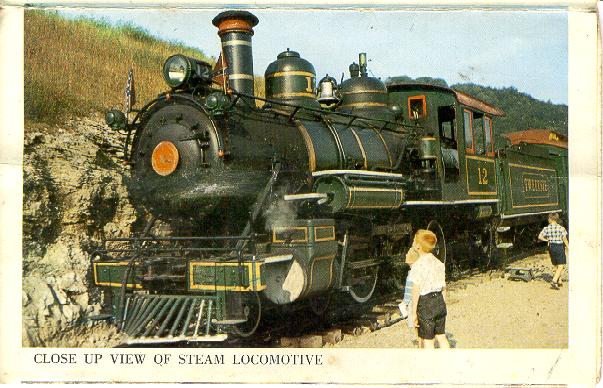
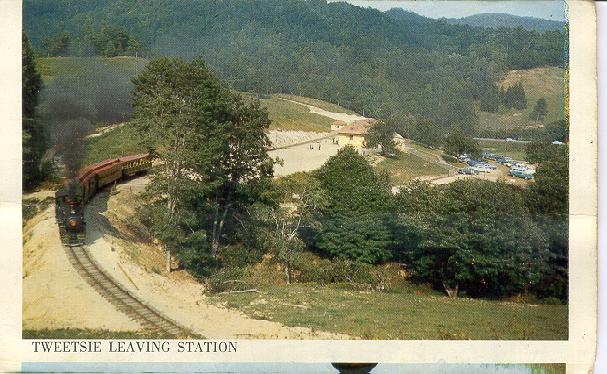
From the Tweetsie Railroad site, I obtained this information about Tweetsie and the Number 12 engine shown in the pictures above:
Tweetsie's history dates back to 1866, when the Tennessee legislature granted the East Tennessee & Western North Carolina Railroad company permission for the construction of a railroad. At the outset, the ET&WNC line (which mountain humorists dubbed the "Eat Taters & Wear No Clothes" Railroad) was to operate from Johnson City, Tennessee to the iron mines just over the state line at Cranberry, North Carolina.
The narrow-gauge railroad began operations in 1881 after fifty miles of track was laid through the rugged Blue Ridge chain of the Appalachian Mountains that divide the two southern states. Later, additional tracks were laid to Boone, North Carolina, and in 1919 rail service extended to that mountain community. The new line added passenger service to the formerly isolated area, and brought lumber out of the mountains.
The name "Tweetsie" was given to the railroad by local folks who became accustomed to the shrill "tweet, tweet" train whistles that echoed through the hills. The name stuck, and the train was known as Tweetsie ever since.
On July 13, 1950 the ET&WNC Railroad ceased all narrow-gauge operations. Tweetsie Locomotive #12 - the last of the original 13 coal-fired ET & WNC steam engines - was purchased by railroad enthusiasts and moved to Harrisonburg, Virginia as the Shenandoah Central Railroad. Her stay there was cut short when hurricane Hazel swept through the state in 1954 and wiped out the train tracks. The owners found a buyer for #12 in Gene Autry. The movie cowboy intended to ship the locomotive to California to use in films.
Blowing Rock native Grover Robbins, Jr. decided that it was time to bring Tweetsie back to the mountains where she belonged. Robbins purchased the rights to Tweetsie from Gene Autry, and in 1956 the little engine headed back to Robbins' hometown in the mountains of North Carolina.
In the summer of 1957, Tweetsie Railroad opened at her new location just a couple of miles away from the old railroad station in Boone.
Engine No. 12:
Authentic narrow-gauge steam locomotive
Built in 1917 by Baldwin Locomotive Works of Philadelphia, PA
Original Cost - $14,000
Only survivor of original 13 East Tennessee and Western North Carolina Railroad narrow gauge locomotives
Size - 54 feet long, 8 feet 4 inches wide, 12 feet 6 inches tall
Weight - More than 60 tons
Power - Coal-fired, steam generated inside
54 inch-wide steel boiler running under 180 pounds of pressure
Water tank capacity - 3,000 gallons
Coal capacity - 7 tons
Total working weight with coal and water - 82.5 tons
Listed in National Register of Historic Places in 1992
Visit www.tweetsie.com for more information.
Click here to see pictures of my old Lionel electric train set.